磷脂酰肌醇3-激酶(PI3Ks)信号通路相关
磷脂酰肌醇3-激酶(PI3Ks)蛋白家族参与细胞增殖、分化、凋亡和葡萄糖转运等多种细胞功能的调节。PI3K活性的增加常与多种癌症相关。PI3K磷 酸化磷脂酰肌醇PI(一种膜磷脂)肌醇环的第3位碳原子。PI在细胞膜组分中所占比例较小,比磷脂酰胆碱、磷脂酰乙醇胺和磷脂酰丝氨酸含量少。但在脑细胞 膜中,含量较为丰富,达磷脂总量的10%。
PI的肌醇环上有5个可被磷酸化的位点,多种激酶可磷酸化PI肌醇环上的4th和5th位点,因而通常在这两位点之一或两位点发生磷酸化修饰,尤其发生 在质膜内侧。通常,PI-4,5-二磷酸(PIP2)在磷脂酶C的作用下,产生二酰甘油(DAG)和肌醇-1,4,5-三磷酸。PI3K转移一个磷酸基团 至位点3,形成的产物对细胞的功能具有重要的影响。譬如,单磷酸化的PI-3-磷酸,能刺激细胞迁移(cell trafficking),而未磷酸化的则不能。PI-3,4-二磷酸则可促进细胞的增殖(生长)和增强对凋亡的抗性,而其前体分子PI-4-磷酸则不 然。PIP2转换为PI-3,4,5-三磷酸,可调节细胞的黏附、生长和存活。
PI3K可分为3类,其结构与功能各异。其中研究最广泛的为I类PI3K, 此类PI3K为异源二聚体,由一个调节亚基和一个催化亚基组成。调节亚基含有SH2和SH3结构域,与含有相应结合位点的靶蛋白相作用。该亚基通常称为 p85, 参考于第一个被发现的亚型(isotype),然而目前已知的6种调节亚基,大小从50至110kDa不等。催化亚基有4种,即p110α, β,δ,γ,而δ仅限于白细胞,其余则广泛分布于各种细胞中。
PI3K的活化很大程度上参与到靠近其质膜内侧的底物。多种生长因子和信号传导复合 物,包括成纤维细胞生长因子(FGF)、血管内皮生长因子(VEGF)、人生长因子(HGF)、血管位蛋白I(Ang1)和胰岛素都能启始PI3K的激活 过程。这些因子激活受体酪氨酸激酶(RTK),从而引起自磷酸化。受体上磷酸化的残基为异源二聚化的PI3Kp85亚基提供了一个停泊位点 (docking site)。然而在某些情况下,受体磷酸化则会介导募集一个接头蛋白(adaptor protein)。比如,当胰岛素激活其受体后,则必须募集一个胰岛素受体底物蛋白(IRS),来促进PI3K的结合。相似的,当整连蛋白 integrin(非RTK)被激活后,粘着斑激酶(FAK) 则作为接头蛋白,将PI3K通过其p85停泊。但在以上各情形下,p85亚基的SH2和SH3结构域均在一个磷酸化位点与接头蛋白结合。PI3K募集到活 化的受体后,起始多种PI中间体的磷酸化。与癌肿尤其相关的PI3K转化PIP2为PIP3。
PIP3作为锚定物(anchor)
许多蛋白含有一个Pleckstrin Homology(PH)结构域,因而可使其与PI-3,4-P2或PI-3,4,5-P3相结合。这种相互作用可以控制蛋白与膜结合的时间与定位,通过 这种方式来调节蛋白的活性。蛋白与脂质间的这种相互作用亦可能引起蛋白构像的变化而改变蛋白的功能。PI3K激活的结果是在质膜上产生第二信使PIP3, PIP3与细胞内含有PH结构域的信号蛋白AKT和PDK1(phosphoinositide dependent kinase-1)结合, 促使PDK1磷酸化AKT蛋白的Ser308导致AKT活化。其他PDK1的底物还包括PKC(蛋白激酶C)、S6K(p70S6)和 SGK(serum/glucocorticoid regulated kinases) 。AKT, 亦称为蛋白激酶B(PKB),是PI3K下游主要的效应物。AKT可分为3种亚型(AKT1、AKT2、AKT3或PKBα, PKBβ,PKBγ),3种亚型的功能各异,但也有重叠。
AKT的作用
活化的AKT通过磷酸化多种酶、激酶和转录因子等下游因子,进而调节细胞的功能。譬如,AKT刺激葡萄糖的代谢:AKT激活AS160(AKT底 物,160kDa),进而促进GLUT4转座和肌细胞对葡萄糖的吸收。AKT也磷酸化GSK3β而抑制其活性,从而促进葡萄糖的代谢和调节细胞的周期。 AKT磷酸化TSC1/2(tuberous sclerosis complex),可阻止其对小G蛋白Rheb(Ras homology enriched in brain)的负调控,进而使得Rheb富集以及对纳巴霉素(rapamycin)敏感的mTOR复合体(mTORC1)的活化。这些作用可激活蛋白的翻 译,增强细胞的生长。
AKT通过下游多种途径对靶蛋白进行磷酸化而发挥抗凋亡作用。ATK激活IkB激酶(IKKα),导致NF-κB的抑制剂 IκB的降解, 从而使NF-κB从细胞质中释放出来进行核转位, 激活其靶基因而促进细胞的存活。AKT磷酸化Bcl-2家族成员BAD,使其与14-3-3结合而阻止其与Bcl-XL结合起始凋亡。此外,AKT能抑制 蛋白水解酶caspase-9的活性而阻止凋亡级联反应的激活。肿瘤抑制因子p53为一转录因子,调控凋亡、DNA修复和细胞周期的停滞。Akt能通过磷 酸化P53结合蛋白MDM2影响P53的活性, 磷酸化的MDM2转位到细胞核与P53结合, 通过增加P53蛋白的降解而影响细胞存活。Forkhead转录因子FOXO1( 或FKHR)调节涉及多种细胞功能基因的表达,包括凋亡、DNA修复和 细胞周期的停滞和葡萄糖代谢等,AKT磷酸化FOXO1,抑制其核转位而阻止其转录激活作用。
PTEN: 一个关键磷酸酶
PTEN (phosphatase and tensin homology deleted on chromosome 10),在广泛的人类肿瘤中发生基因突变或缺失。PTEN是一个PIP3-磷酸酶,与PI3K的功能相反,它可以通过去磷酸化将PIP3转变为PI- 4,5-P2。PTEN可减少AKT的活化而阻止所有由AKT调控的下游信号传导事件。通过产生PIP2, PTEN的功能远不止仅仅阻止AKT的作用。PIP2作为磷脂酶Cβ(PLCβ)的底物,产生DAG和IP3作为第二信使,升高胞内钙离子的水平并激活蛋 白激酶C(PKC)。与膜结合的PIP2也能介导(增加)多种离子通道的活性,包括钙离子、钾离子和钠离子通道。PIP也参与到膜泡的形成以及细胞骨架与 膜的相互作用过程中。PIP2还影响多种参与脂代谢的酶活性,包括磷脂酶D和神经酰胺-1-磷酸。通过从PIP产生PIP2, PTEN广泛的影响着细胞的多种功能途径。PTEN在减弱PIP3信号传导而增加PIP2水平的过程中,发挥着重要的作用。
PI3K-AKT-mTOR is one of the three major signalling pathways that have been identified as important in cancer. mTOR is a key kinase downstream of PI3K/AKT, which regulates tumor cell proliferation, growth, survival and angiogenesis. Cancer cells escape normal biochemical systems regulating the balance between apoptosis (suicide) and survival. PI3K-AKT-mTOR generally acts to promote survival through inhibition of proapoptotic factors and activation of anti-apoptotic factors. Through phosphorylation, PI3K-AKT-mTOR inhibits the activity of proapoptotic members while activating anti-apoptotic members. To negatively regulate PI3K, cells contain PTEN phosphatase. A reduction in PTEN expression indirectly stimulates PI3K-AKT-mTOR activity thereby contributing to oncogenesis in human. Recent data suggests that the PI3K-AKT-mTOR signaling pathway plays an important role in cancer stem cell self-renewal and resistance to chemotherapy or radiotherapy, which is believed to be the root of treatment failure and cancer recurrence, as well as metastasis.
癌症中的PI3K-mTOR信号途径
Figure 1 | Minding your Ps: the PtdIns(4,5)P2–PtdIns(3,4,5)P3 cycle. Phosphatidylinositol phosphates are composed of a membrane-associated phosphatidic acid group and a glycerol moiety that is linked to a cytosolic phosphorylated inositol head group. Phosphatidylinositol 3-kinase (PI3K) can phosphorylate PtdIns(4,5)P2 (PIP2) at the D3 position to form the second messenger PtdIns(3,4,5)P3 (PIP3). Phosphorylation at the D3 position is necessary for binding to the pleckstrin-homology domain of AKT (not shown). Dephosphorylation of PIP3 to regenerate PIP2 is accomplished by the 3-phosphatase PTEN. Additionally, PIP3 can be dephosphorylated at the D5 position by SHIP1 or SHIP2 to generate PtdIns(3,4)P2, another potential second messenger.
磷脂酰肌醇3-激酶(PI3Ks)蛋白家族参与细胞增殖、分化、凋亡和葡萄糖转运等多种细胞功能的调节。PI3K活性的增加常与多种癌症相关。PI3K磷 酸化磷脂酰肌醇PI(一种膜磷脂)肌醇环的第3位碳原子。PI在细胞膜组分中所占比例较小,比磷脂酰胆碱、磷脂酰乙醇胺和磷脂酰丝氨酸含量少。但在脑细胞 膜中,含量较为丰富,达磷脂总量的10%。
PI的肌醇环上有5个可被磷酸化的位点,多种激酶可磷酸化PI肌醇环上的4th和5th位点,因而通常在这两位点之一或两位点发生磷酸化修饰,尤其发生 在质膜内侧。通常,PI-4,5-二磷酸(PIP2)在磷脂酶C的作用下,产生二酰甘油(DAG)和肌醇-1,4,5-三磷酸。PI3K转移一个磷酸基团 至位点3,形成的产物对细胞的功能具有重要的影响。譬如,单磷酸化的PI-3-磷酸,能刺激细胞迁移(cell trafficking),而未磷酸化的则不能。PI-3,4-二磷酸则可促进细胞的增殖(生长)和增强对凋亡的抗性,而其前体分子PI-4-磷酸则不 然。PIP2转换为PI-3,4,5-三磷酸,可调节细胞的黏附、生长和存活。
PI3K的活化
PI3K可分为3类,其结构与功能各异。其中研究最广泛的为I类PI3K, 此类PI3K为异源二聚体,由一个调节亚基和一个催化亚基组成。调节亚基含有SH2和SH3结构域,与含有相应结合位点的靶蛋白相作用。该亚基通常称为 p85, 参考于第一个被发现的亚型(isotype),然而目前已知的6种调节亚基,大小从50至110kDa不等。催化亚基有4种,即p110α, β,δ,γ,而δ仅限于白细胞,其余则广泛分布于各种细胞中。
PI3K的活化很大程度上参与到靠近其质膜内侧的底物。多种生长因子和信号传导复合 物,包括成纤维细胞生长因子(FGF)、血管内皮生长因子(VEGF)、人生长因子(HGF)、血管位蛋白I(Ang1)和胰岛素都能启始PI3K的激活 过程。这些因子激活受体酪氨酸激酶(RTK),从而引起自磷酸化。受体上磷酸化的残基为异源二聚化的PI3Kp85亚基提供了一个停泊位点 (docking site)。然而在某些情况下,受体磷酸化则会介导募集一个接头蛋白(adaptor protein)。比如,当胰岛素激活其受体后,则必须募集一个胰岛素受体底物蛋白(IRS),来促进PI3K的结合。相似的,当整连蛋白 integrin(非RTK)被激活后,粘着斑激酶(FAK) 则作为接头蛋白,将PI3K通过其p85停泊。但在以上各情形下,p85亚基的SH2和SH3结构域均在一个磷酸化位点与接头蛋白结合。PI3K募集到活 化的受体后,起始多种PI中间体的磷酸化。与癌肿尤其相关的PI3K转化PIP2为PIP3。
PIP3作为锚定物(anchor)
许多蛋白含有一个Pleckstrin Homology(PH)结构域,因而可使其与PI-3,4-P2或PI-3,4,5-P3相结合。这种相互作用可以控制蛋白与膜结合的时间与定位,通过 这种方式来调节蛋白的活性。蛋白与脂质间的这种相互作用亦可能引起蛋白构像的变化而改变蛋白的功能。PI3K激活的结果是在质膜上产生第二信使PIP3, PIP3与细胞内含有PH结构域的信号蛋白AKT和PDK1(phosphoinositide dependent kinase-1)结合, 促使PDK1磷酸化AKT蛋白的Ser308导致AKT活化。其他PDK1的底物还包括PKC(蛋白激酶C)、S6K(p70S6)和 SGK(serum/glucocorticoid regulated kinases) 。AKT, 亦称为蛋白激酶B(PKB),是PI3K下游主要的效应物。AKT可分为3种亚型(AKT1、AKT2、AKT3或PKBα, PKBβ,PKBγ),3种亚型的功能各异,但也有重叠。
AKT的作用
活化的AKT通过磷酸化多种酶、激酶和转录因子等下游因子,进而调节细胞的功能。譬如,AKT刺激葡萄糖的代谢:AKT激活AS160(AKT底 物,160kDa),进而促进GLUT4转座和肌细胞对葡萄糖的吸收。AKT也磷酸化GSK3β而抑制其活性,从而促进葡萄糖的代谢和调节细胞的周期。 AKT磷酸化TSC1/2(tuberous sclerosis complex),可阻止其对小G蛋白Rheb(Ras homology enriched in brain)的负调控,进而使得Rheb富集以及对纳巴霉素(rapamycin)敏感的mTOR复合体(mTORC1)的活化。这些作用可激活蛋白的翻 译,增强细胞的生长。
AKT通过下游多种途径对靶蛋白进行磷酸化而发挥抗凋亡作用。ATK激活IkB激酶(IKKα),导致NF-κB的抑制剂 IκB的降解, 从而使NF-κB从细胞质中释放出来进行核转位, 激活其靶基因而促进细胞的存活。AKT磷酸化Bcl-2家族成员BAD,使其与14-3-3结合而阻止其与Bcl-XL结合起始凋亡。此外,AKT能抑制 蛋白水解酶caspase-9的活性而阻止凋亡级联反应的激活。肿瘤抑制因子p53为一转录因子,调控凋亡、DNA修复和细胞周期的停滞。Akt能通过磷 酸化P53结合蛋白MDM2影响P53的活性, 磷酸化的MDM2转位到细胞核与P53结合, 通过增加P53蛋白的降解而影响细胞存活。Forkhead转录因子FOXO1( 或FKHR)调节涉及多种细胞功能基因的表达,包括凋亡、DNA修复和 细胞周期的停滞和葡萄糖代谢等,AKT磷酸化FOXO1,抑制其核转位而阻止其转录激活作用。
PTEN: 一个关键磷酸酶
PTEN (phosphatase and tensin homology deleted on chromosome 10),在广泛的人类肿瘤中发生基因突变或缺失。PTEN是一个PIP3-磷酸酶,与PI3K的功能相反,它可以通过去磷酸化将PIP3转变为PI- 4,5-P2。PTEN可减少AKT的活化而阻止所有由AKT调控的下游信号传导事件。通过产生PIP2, PTEN的功能远不止仅仅阻止AKT的作用。PIP2作为磷脂酶Cβ(PLCβ)的底物,产生DAG和IP3作为第二信使,升高胞内钙离子的水平并激活蛋 白激酶C(PKC)。与膜结合的PIP2也能介导(增加)多种离子通道的活性,包括钙离子、钾离子和钠离子通道。PIP也参与到膜泡的形成以及细胞骨架与 膜的相互作用过程中。PIP2还影响多种参与脂代谢的酶活性,包括磷脂酶D和神经酰胺-1-磷酸。通过从PIP产生PIP2, PTEN广泛的影响着细胞的多种功能途径。PTEN在减弱PIP3信号传导而增加PIP2水平的过程中,发挥着重要的作用。
PI3K-AKT-mTOR is one of the three major signalling pathways that have been identified as important in cancer. mTOR is a key kinase downstream of PI3K/AKT, which regulates tumor cell proliferation, growth, survival and angiogenesis. Cancer cells escape normal biochemical systems regulating the balance between apoptosis (suicide) and survival. PI3K-AKT-mTOR generally acts to promote survival through inhibition of proapoptotic factors and activation of anti-apoptotic factors. Through phosphorylation, PI3K-AKT-mTOR inhibits the activity of proapoptotic members while activating anti-apoptotic members. To negatively regulate PI3K, cells contain PTEN phosphatase. A reduction in PTEN expression indirectly stimulates PI3K-AKT-mTOR activity thereby contributing to oncogenesis in human. Recent data suggests that the PI3K-AKT-mTOR signaling pathway plays an important role in cancer stem cell self-renewal and resistance to chemotherapy or radiotherapy, which is believed to be the root of treatment failure and cancer recurrence, as well as metastasis.
癌症中的PI3K-mTOR信号途径
Figure 1 | Minding your Ps: the PtdIns(4,5)P2–PtdIns(3,4,5)P3 cycle. Phosphatidylinositol phosphates are composed of a membrane-associated phosphatidic acid group and a glycerol moiety that is linked to a cytosolic phosphorylated inositol head group. Phosphatidylinositol 3-kinase (PI3K) can phosphorylate PtdIns(4,5)P2 (PIP2) at the D3 position to form the second messenger PtdIns(3,4,5)P3 (PIP3). Phosphorylation at the D3 position is necessary for binding to the pleckstrin-homology domain of AKT (not shown). Dephosphorylation of PIP3 to regenerate PIP2 is accomplished by the 3-phosphatase PTEN. Additionally, PIP3 can be dephosphorylated at the D5 position by SHIP1 or SHIP2 to generate PtdIns(3,4)P2, another potential second messenger.
PI3K的激活机制.
AKT信号的调控
Figure 3 |. Activation of AKT is initiated by membrane translocation,which occurs after cell stimulation and PtdIns(3,4,5)P3 (PIP3) production. Localization of AKT to the plasma membrane is accomplished by an interaction between its pleckstrin-homology (PH) domain and PIP3. At the membrane, association with carboxy-terminal modulator protein (CTMP) prevents AKT from becoming phosphorylated and fully active. Phosphorylation of CTMP by an asyet unidentified kinase releases CTMP from AKT and allows AKT to be phosphorylated by PDK1 and PDK2 at Thr308 and Ser473, respectively. Phosphorylation at these two sites causes ful activation of AKT. C2, C2 domain; CD, catalytic domain; p85 BD, p85-binding domain.
PI3K信号通路
Figure 3 | Activation of class IA phosphatidylinositol 3-kinases (PI3Ks) occurs through stimulation of receptor tyrosine kinases (RTKs) and the concomitant assembly of receptor–PI3K complexes. These complexes localize at the membrane where the p110 subunit of PI3K catalyses the conversion of PtdIns(4,5)P2 (PIP2) to PtdIns(3,4,5)P3 (PIP3). PIP3 serves as a second messenger that helps to activate AKT. Through phosphorylation, activated AKT mediates the activation and inhibition of several targets, resulting in cellular growth, survival and proliferation through various mechanisms. Additionally, PI3K has been shown to regulate the activity of other cellular targets, such as the serum and glucocorticoid-inducible kinase (SGK), the small GTP-binding proteins RAC1 and CDC42, and protein kinase C (PKC), in an AKT-independent manner through poorly characterized mechanisms. The activity of these targets leads to survival, cytoskeletal rearrangement and transformation. GSK3

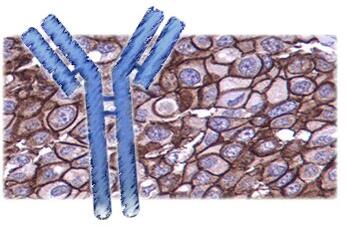
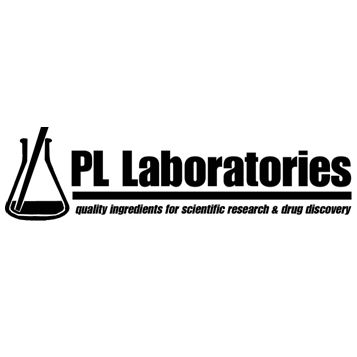
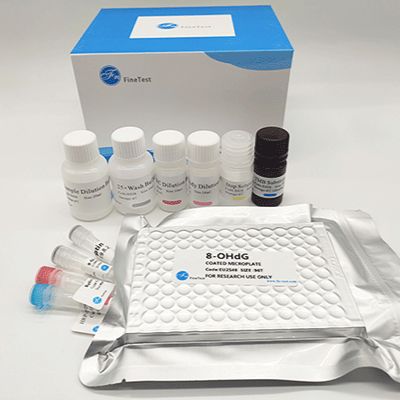



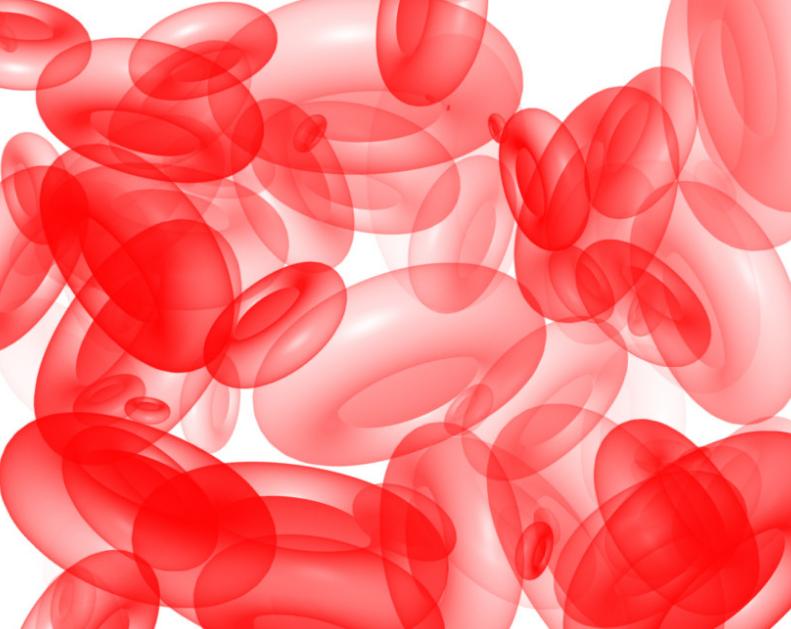
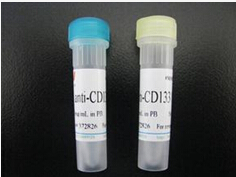

评论
striphower
您好 想请问一下以上出自哪篇文献?谢谢
威尔先生
真好,说的很明白